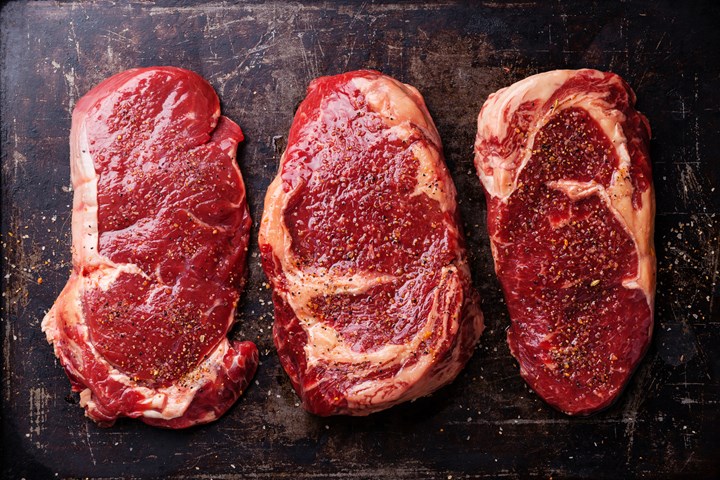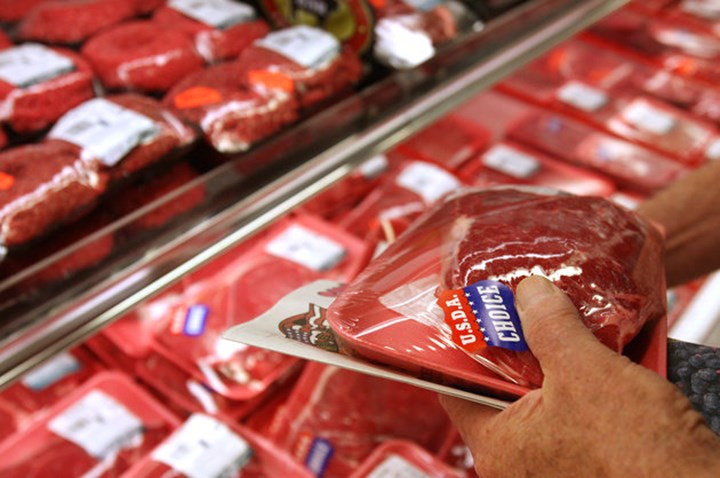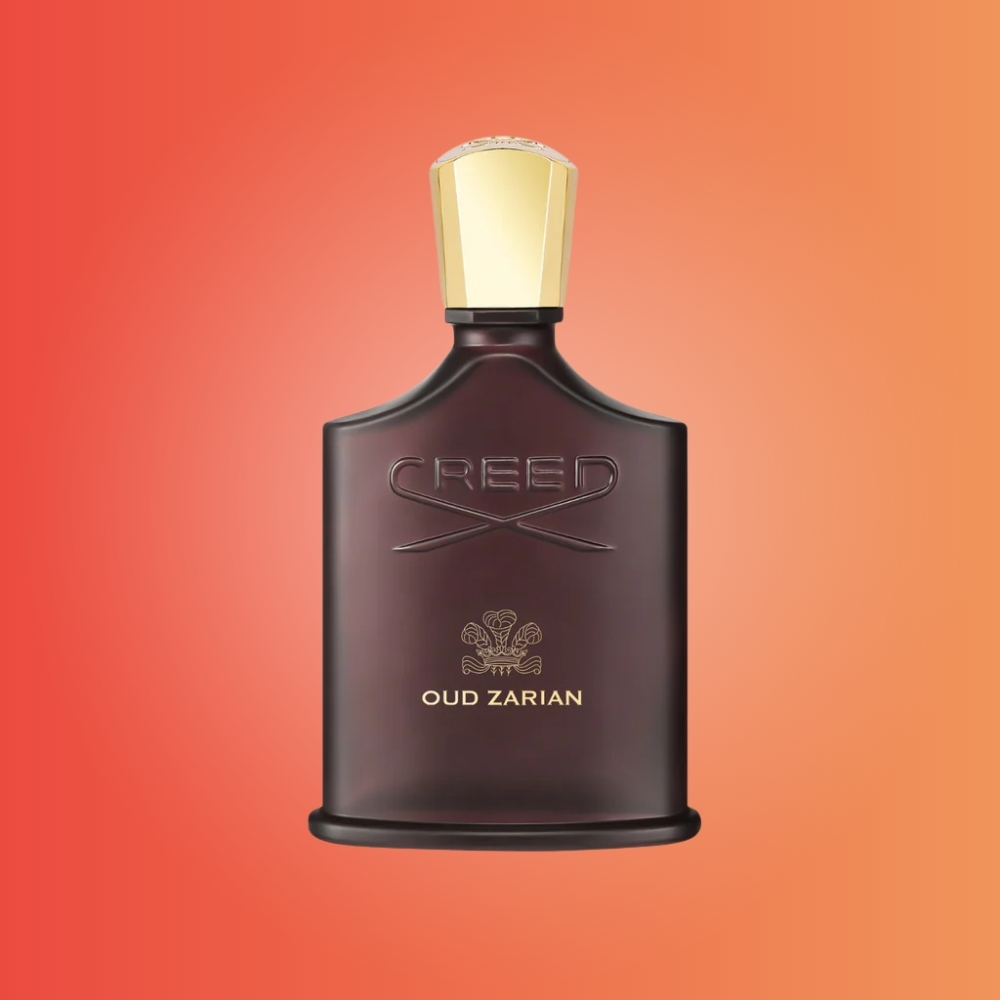
Most guys love steak, and the debate about the best way to cook it will go on forever. A lot of guys, however, have a fear of eating red meat that looks “bloody.”
Well, prepare to have your mind blown: that “blood” isn’t actually blood at all. It’s myoglobin, which is the protein that delivers oxygen to an animal’s muscles. When the meat is cut or exposed to air, the protein turns red. The more it’s heated, the darker the meat becomes.
So rare meat isn’t exactly “bloody”; it’s just cooked to a lower temperature.
Jeffrey Savell, a professor of meat science at Texas A&M University, says animals with more active muscle tissues, as well as older animals, have meat with more myoglobin.
That explains why veal – meat from a baby calf – is much lighter in colour than a T-bone steak, as the calf’s muscles haven’t grown as much as the cow’s.
But do you know what colour of meat is freshest?
If you answered red, you’re wrong: it’s purple. A fresh-cut of cow’s meat is purple, but exposure to oxygen during the packing process sees it turn red – the colour we’ve come to associate with freshness.
In fact, producers have gone so far as to inject their meat with carbon dioxide gas in order to ensure the meat stays bright red long past its normal lifespan. So just because that steak in the grocery aisle looks bright red, that doesn’t necessarily mean it’s fresh.
If you cook meat after buying it rare, then you can expect a lot of myoglobin to leak out. But why does it look so much like blood?
“Meat is about 70 per cent water,” says Savell, “so you have water, myoglobin and other pigments that leak out.
“That’s where this juice comes from. I can assure you it’s not blood,” Savell explains.
No, it’s not blood – but knowing it’s still a red liquid from the inside of an animal isn’t any more comforting.















